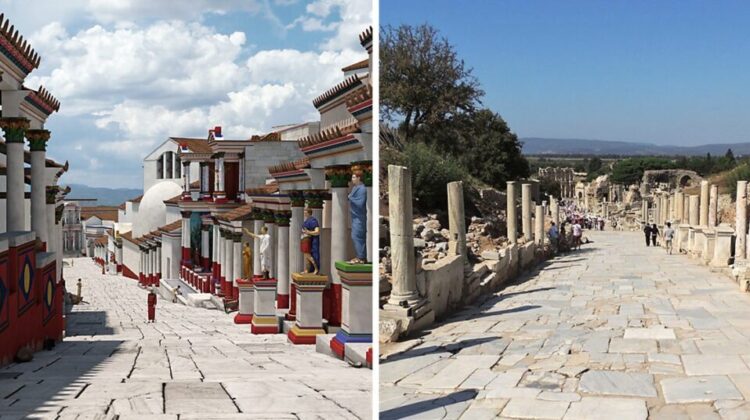
Hungarian illustrator Ádám Németh creates amazing 3D renderings of what the ancient Greek city of Ephesus most probably looked like when it was part of the Roman Empire around the beginning of the 2nd century AD.
What we see today of ancient Greece are mostly ruins, and strolling through them it’s hard to imagine what those places and buildings actually looked like in their prime, when they were buzzing with life and, as these images prove, had an amazing amount of color, too!
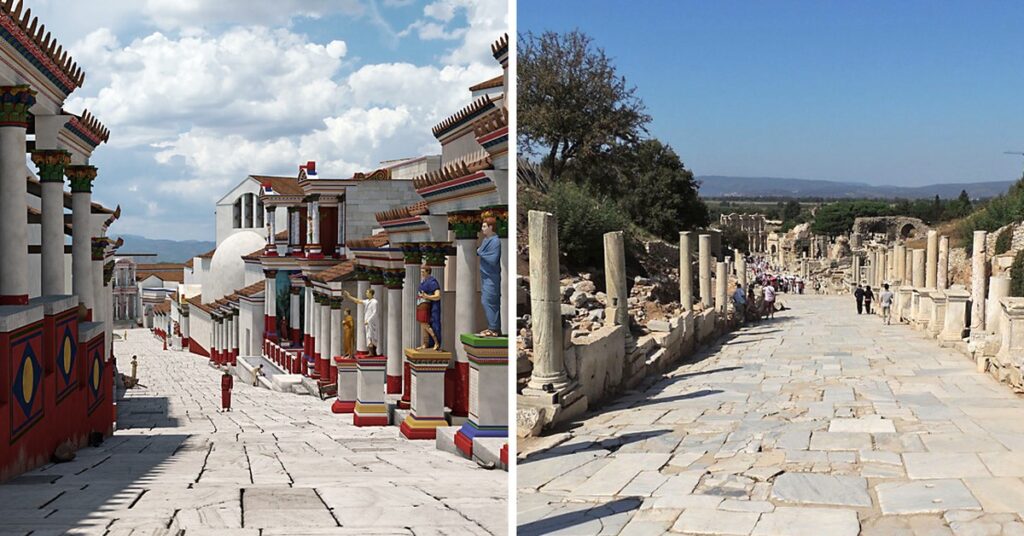
3D artist Ádám Németh creates archaeological renderings that are accurate to the actual time period, due to his extensive research on references and reviews of sources found online, in libraries and in museums, and also ongoing discussions with archaeologists.
“I have been dealing with Roman-era reconstructions since 2009, initially focusing on Aquincum, Sopianae,” Németh told Earthly Mission. “In 2016, I was approached by the Spanish publisher Tecam who were looking for a reconstruction specialist for National Geographic’s book series on ancient cities. I was given Ephesus.”
Temple of Hadrian in Ephesus

Temple of Hadrian today
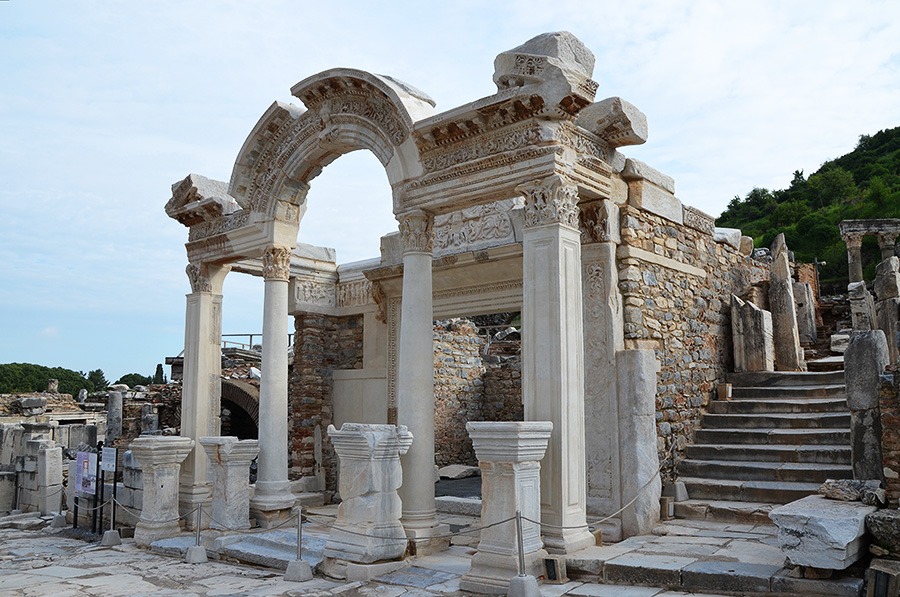
Németh mainly relied on the publications of the Austrian Institute of Archeology, ÖAI, who have been excavating in the city for more than 100 years.
“I made a 3D model of several locations using photogrammetry to make the reconstruction more accurate. The missing details were determined on the basis of my knowledge of Roman architecture and culture. Such is the question of paintings and decorations, as pigment tests have not yet been carried out on sculptures and buildings, but we do know that they were painted in bright colors. No one knows exactly what the decorations were like, I’m presenting a likely possibility,” Németh explains.
Nymphaeum Traiani
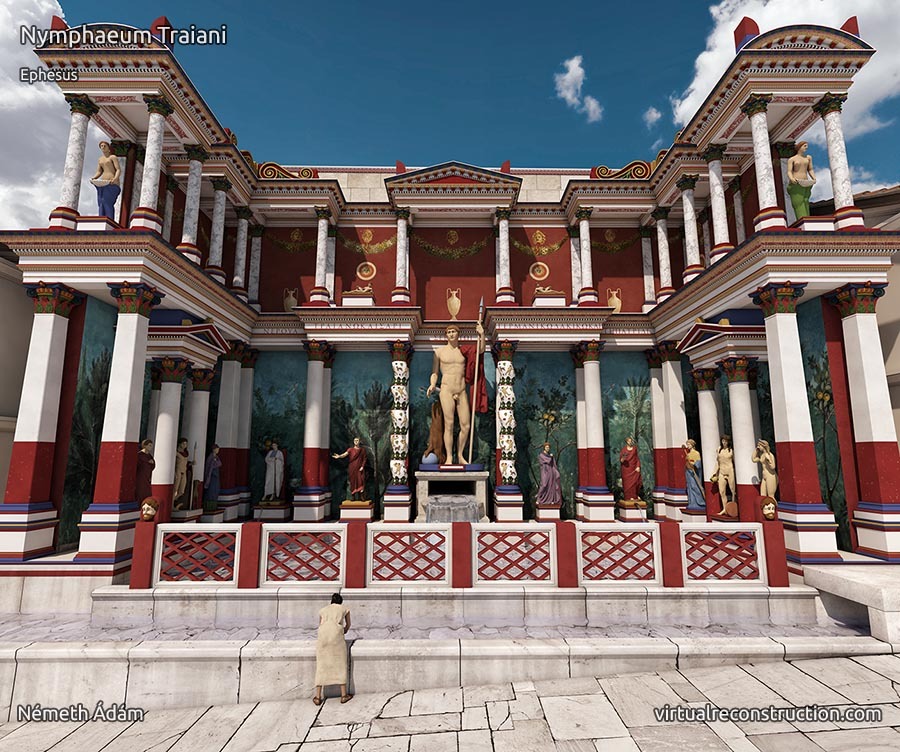
Nymphaeum Traiani today
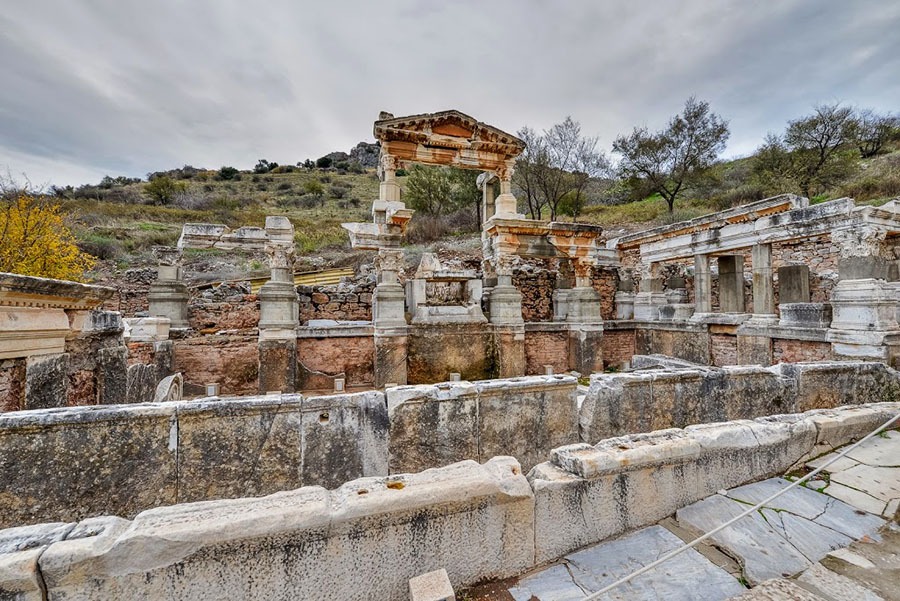
Located in İzmir Province of today’s Turkey, the city of Ephesos was built in the 10th century BC on the site of the former Arzawan capital by Attic and Ionian Greek colonists. During the Classical Greek era, it was one of twelve cities that were members of the Ionian League. The city became a subject of the Roman Republic in 129 BC.
The city was famous in its day for the nearby Temple of Artemis (completed around 550 BC), which has been designated one of the Seven Wonders of the Ancient World. Its many monumental buildings included the Library of Celsus and a theatre capable of holding as many as 24,000 spectators (see their reconstructions below).
Temple of Artemis
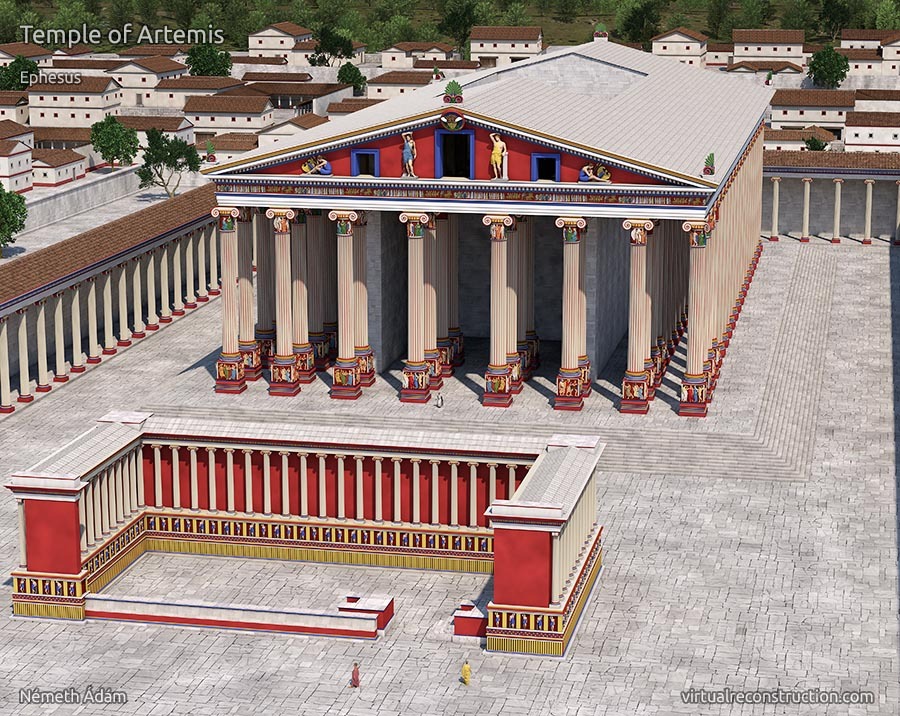
The Site of the Temple of Artemis Today
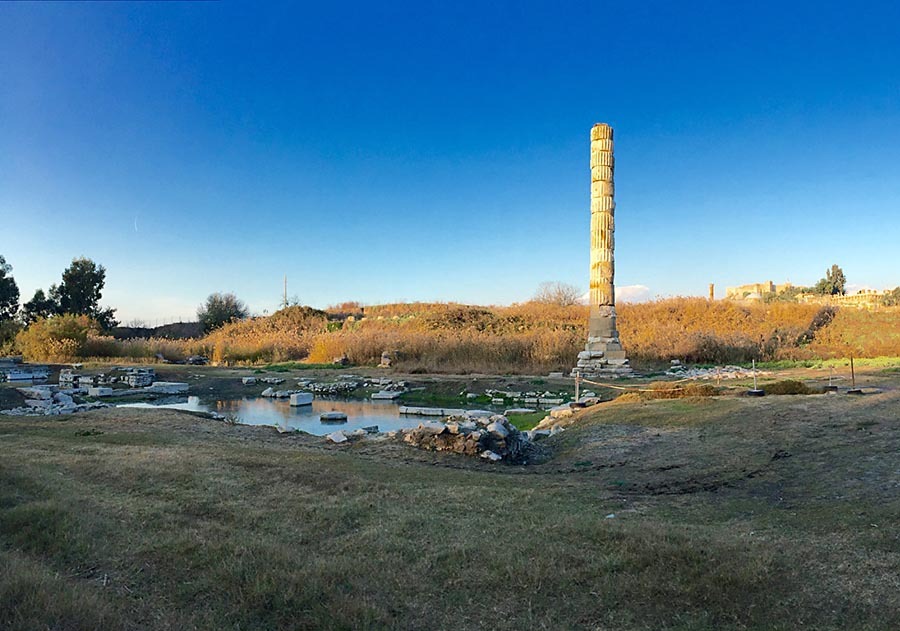
In 27 BC, about a hundred years after Ephesus came under Roman rule, Augustus became emperor and he made the city the capital of the province of Asia. The city became the second largest city in the empire after Rome, living its heyday in the 1st and 2nd centuries AD – which is exactly the time these amazing 3D renderings reconstruct.
In those days, Ephesus had a population reaching half a million, many of whom were engaged in handicrafts or trades. Every year in April, large-scale celebrations were held in honor of the goddess Artemis, attended by nearly one million people. Many baths and public buildings were built, and the city’s plumbing system was regarded the most developed in the ancient world. The city further enhanced its role in trade to the extent that at a certain point it was considered the bank of Asia Minor.
Curetes Street, a busy central street in Ephesus
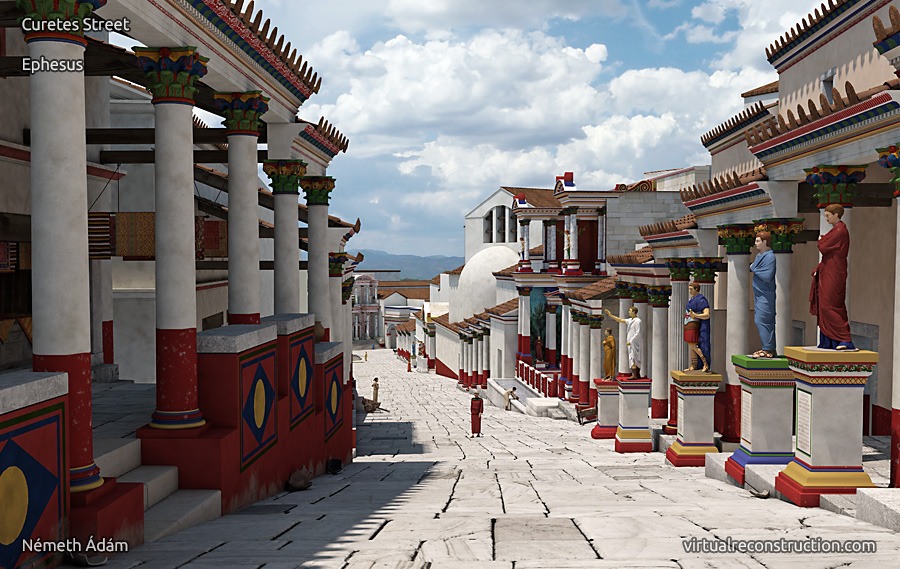
Curetes Street today
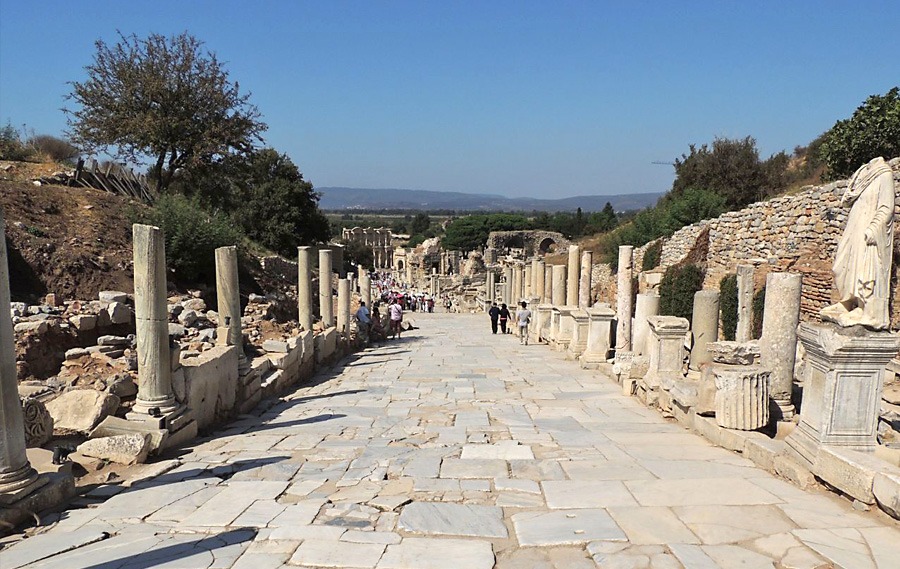
The city also played an important role in the early days of Christianity. In around 50 AD, the apostle Paul spent years in the city and wrote his first letter to the Corinthians in 53 AD. He was converting together with his disciples and was then exiled after a riot in the theater. Ephesus was one of the seven cities mentioned in the book of Revelation, proving how strong the local Christian congregation was. At the end of the 1st century, between 90 and 100 AD, the evangelist John spent the last ten years of his life in the city and wrote his gospel there. A church was built above his tomb in the 6th century.
Ephesus became a Roman city in every way, as evidenced by the sentence “Ephesus, the capital of the province of Asia, became a Roman city,” which was inscribed not only in Greek but also in Latin letters on the wall of the basilica. The life of Ephesus in Roman times is known not only from the results of large-scale excavations, but also from inscriptions made by wealthy families. Almost all of the buildings that have survived to this day are from this era, including the Library of Celsus, the Theater, or the Temple of Hadrian.
And now we have a chance to look at them in their original splendor.
Library of Celsus
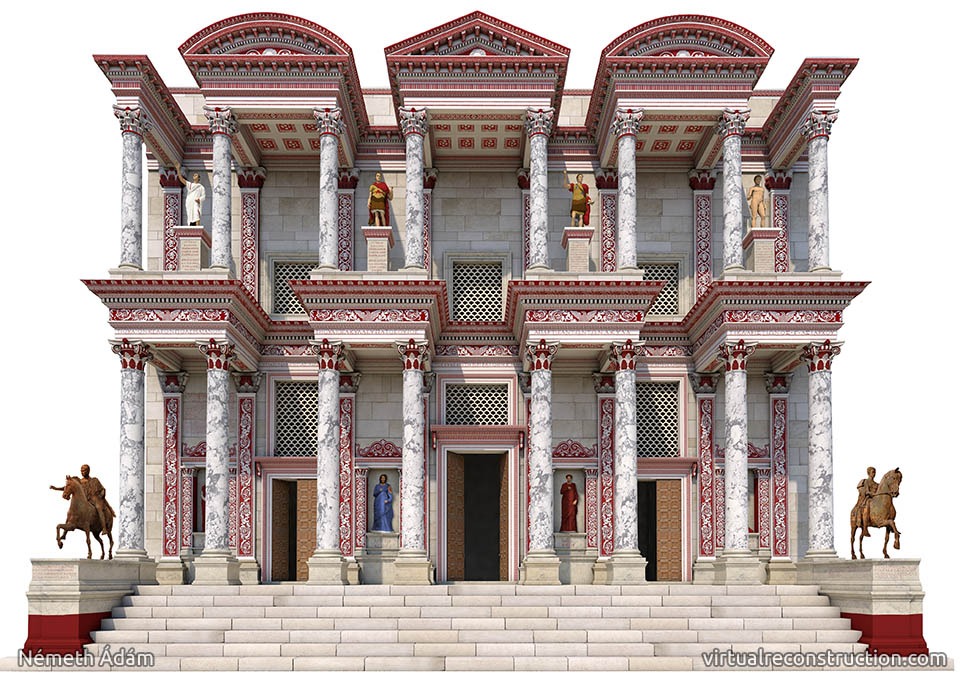

Library of Celsus today

House of a very rich family

The same house today
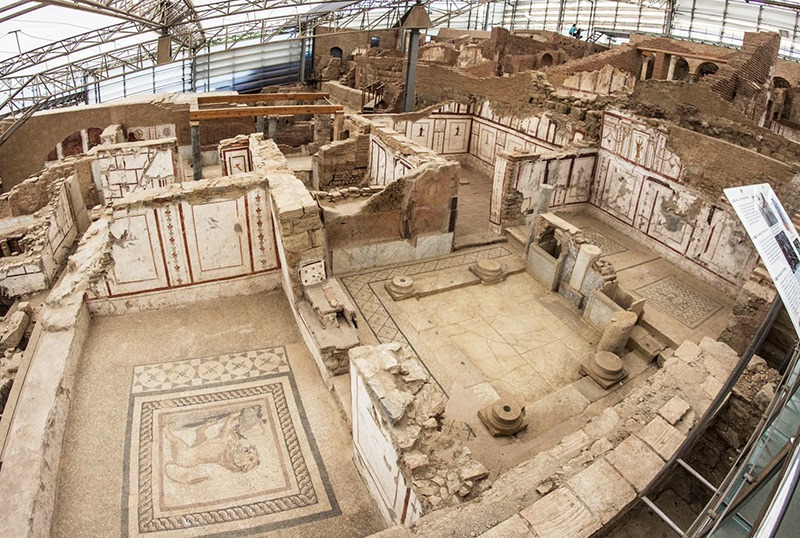
The theater in Ephesus

The theater today
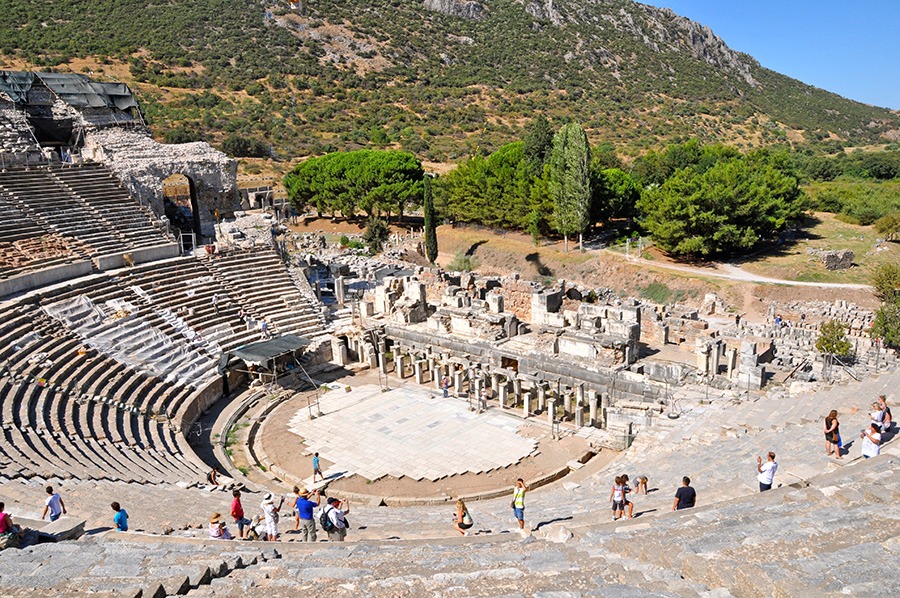
Memmius monument
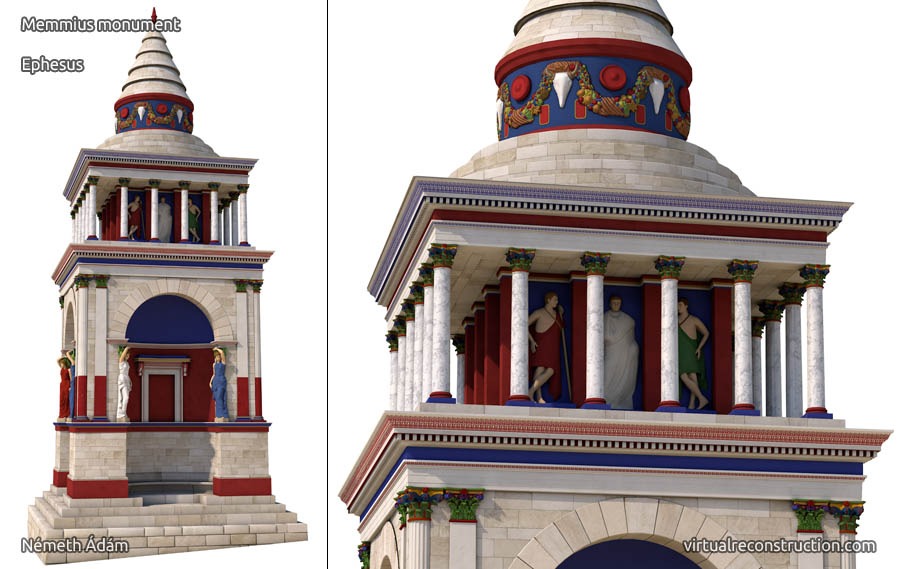
The Memmius monument today

Ephesus was truly remarkable place in its heyday

And here’s what remained of it…
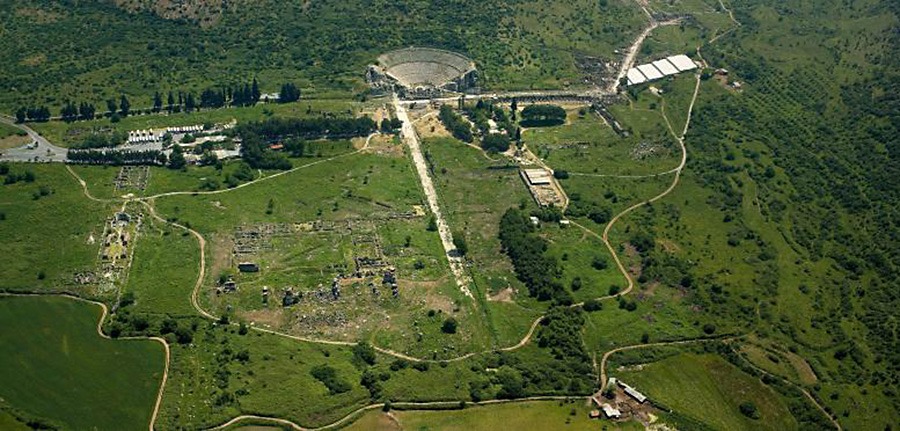

Leave a Reply